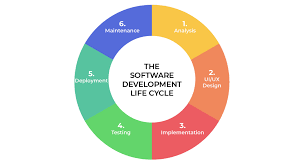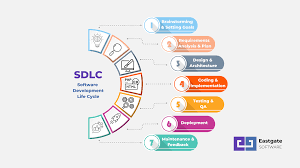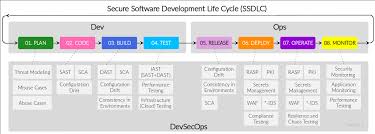Ethical AI: Shaping a Responsible and Fair Future
Understanding Ethical AI: Building a Responsible Future
The rapid advancement of artificial intelligence (AI) has brought about transformative changes across various sectors, from healthcare to finance. However, with these advancements come significant ethical considerations. Ensuring that AI operates within ethical boundaries is crucial for fostering trust and promoting societal well-being.
What is Ethical AI?
Ethical AI refers to the development and deployment of artificial intelligence systems in a manner that aligns with moral values and societal norms. It involves creating algorithms that are fair, transparent, and accountable, ensuring they do not perpetuate biases or cause harm.
Key Principles of Ethical AI
- Fairness: AI systems should be designed to treat all individuals equitably, avoiding discrimination based on race, gender, age, or other characteristics.
- Transparency: The decision-making processes of AI should be explainable and understandable to users. This transparency helps build trust and allows for accountability.
- Accountability: Developers and organizations must take responsibility for the outcomes of their AI systems. This includes addressing any unintended consequences or biases that may arise.
- Privacy: Protecting user data is paramount. Ethical AI prioritizes data security and ensures that personal information is handled with care.
The Importance of Ethical AI
The implementation of ethical principles in AI development is critical for several reasons:
- Avoiding Bias: Without careful oversight, AI systems can inadvertently perpetuate existing societal biases present in the data they are trained on. Ethical guidelines help mitigate this risk.
- Building Trust: As AI becomes more integrated into daily life, maintaining public trust through ethical practices is essential for widespread acceptance and use.
- Safeguarding Human Rights: By adhering to ethical standards, developers ensure that AI technologies respect fundamental human rights and freedoms.
The Challenges Ahead
The path to achieving truly ethical AI is fraught with challenges. One major hurdle is the lack of universal standards or regulations governing ethical practices in AI development. Additionally, balancing innovation with regulation requires careful consideration to avoid stifling technological progress while ensuring safety and fairness.
The interdisciplinary nature of ethics also means collaboration between technologists, ethicists, policymakers, and the public is necessary to address complex issues effectively.
The Way Forward
A concerted effort from all stakeholders involved in the development and deployment of AI technologies is essential for fostering an ethical future. This includes ongoing research into bias detection methods, creating comprehensive regulatory frameworks, and promoting education around responsible AI usage.
By prioritizing ethics in artificial intelligence today, society can harness its benefits while minimizing potential harms tomorrow. As we continue to innovate at an unprecedented pace, keeping ethics at the forefront will ensure a responsible path forward in our increasingly digital world.
Together, we can build an equitable future where technology serves humanity’s best interests without compromising our core values.
6 Essential Tips for Maintaining Ethical Standards in AI Development
- Ensure transparency in AI decision-making processes.
- Regularly assess and mitigate biases in AI algorithms.
- Respect privacy rights when collecting and using data for AI.
- Provide clear explanations for AI-generated outcomes to users.
- Promote accountability for the actions of AI systems and their creators.
- Continuously monitor and update AI systems to ensure ethical standards are maintained.
Ensure transparency in AI decision-making processes.
Ensuring transparency in AI decision-making processes is crucial for fostering trust and accountability in artificial intelligence systems. When AI algorithms make decisions, it’s important that users and stakeholders understand how these decisions are reached. Transparency involves making the inner workings of AI systems more understandable and accessible, allowing individuals to see the data inputs, logic, and criteria used in generating outcomes. This openness helps prevent unintended biases and errors while enabling users to challenge or question decisions when necessary. By prioritizing transparency, developers can create AI systems that not only perform effectively but also align with ethical standards, ultimately building confidence among users and promoting responsible use of technology.
Regularly assess and mitigate biases in AI algorithms.
Regularly assessing and mitigating biases in AI algorithms is crucial to ensuring fairness and equity in technology. AI systems often learn from large datasets that may contain historical biases, inadvertently leading to biased outcomes that can perpetuate or even amplify existing inequalities. By consistently evaluating these algorithms, developers can identify and address any embedded biases, making necessary adjustments to the data or the algorithm’s structure. This proactive approach not only enhances the accuracy and reliability of AI systems but also fosters trust among users by demonstrating a commitment to ethical practices. Ultimately, regular bias assessments help create AI technologies that are more inclusive and just, benefiting a diverse range of users across various demographics.
Respect privacy rights when collecting and using data for AI.
Respecting privacy rights when collecting and using data for AI is a fundamental aspect of ethical AI development. As AI systems often rely on vast amounts of personal data to function effectively, it is crucial to ensure that this data is handled with the utmost care and responsibility. Organizations must implement robust data protection measures, obtain informed consent from individuals, and be transparent about how their data will be used. By prioritizing privacy, developers can build trust with users, safeguard sensitive information, and comply with legal regulations such as GDPR. Ultimately, respecting privacy rights not only protects individuals but also enhances the credibility and acceptance of AI technologies in society.
Provide clear explanations for AI-generated outcomes to users.
In the realm of ethical AI, it is essential to provide clear explanations for AI-generated outcomes to users. Transparency in how decisions are made by artificial intelligence systems not only fosters trust but also empowers users to understand and potentially challenge the results they receive. By offering clear and accessible explanations, individuals can better comprehend the reasoning behind AI-generated outcomes, leading to increased accountability and fairness in the use of these technologies.
Promote accountability for the actions of AI systems and their creators.
Promoting accountability for the actions of AI systems and their creators is essential for ensuring responsible and ethical development. This involves establishing clear guidelines and frameworks that hold developers, organizations, and stakeholders responsible for the outcomes of AI technologies. By implementing mechanisms for oversight and review, it becomes possible to address any unintended consequences or biases that may emerge from AI systems. Moreover, fostering a culture of accountability encourages transparency in AI processes, allowing users to understand how decisions are made and who is responsible when things go wrong. This not only builds public trust but also drives continuous improvement in AI systems by encouraging creators to prioritize ethical considerations throughout the development lifecycle.
Continuously monitor and update AI systems to ensure ethical standards are maintained.
Continuously monitoring and updating AI systems is crucial to maintaining ethical standards in a rapidly evolving technological landscape. As AI algorithms interact with new data and environments, they can inadvertently develop biases or drift from their original ethical guidelines. Regular assessments and updates help identify and correct these issues, ensuring the AI operates fairly and transparently. This ongoing process not only helps mitigate potential harm but also builds trust with users by demonstrating a commitment to accountability and responsibility. By proactively addressing any deviations from ethical norms, organizations can ensure their AI systems remain aligned with societal values and expectations.











